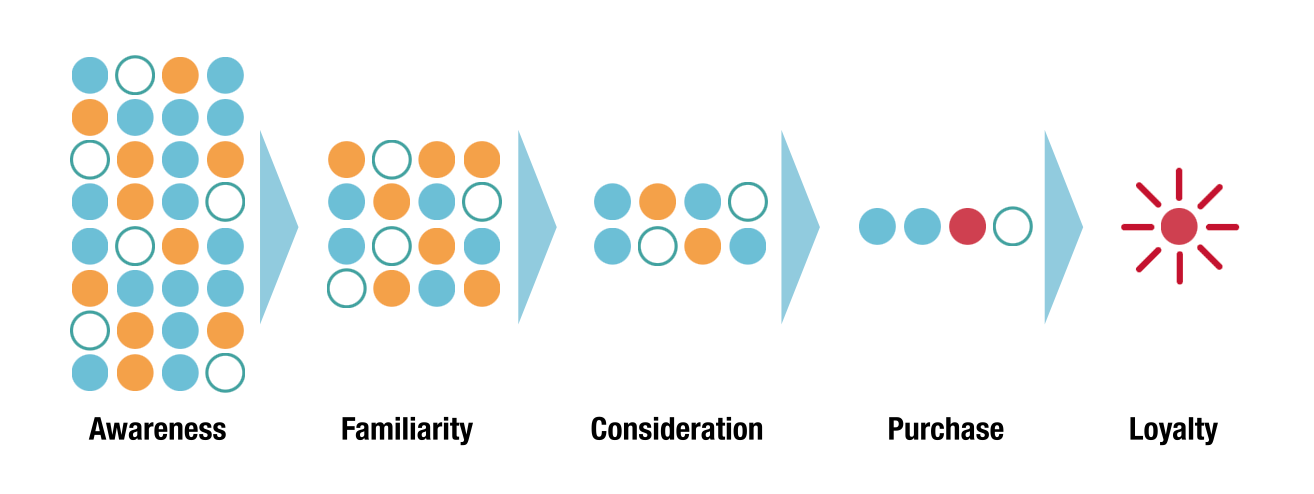
What is a customer journey?
The customer journey (or customer experience journey) describes the entire process that a (potential) customer goes through, starting when they first become aware of the company right through to the purchase and beyond. Companies should make this journey as customer-centric as possible.
The customer journey refers to the various interfaces between a company and its customers. It describes the phases a person goes through until they reach their goal (acquiring a product or service) and have thereby satisfied their requirements.
Even though prospects and leads are only deemed to be customers once they’ve made a purchase, the term ‘customer’ is normally used for the entire journey. For McKinsey & Company, the customer journey encompasses every interaction and experience that a person has with the brand:
«Customer journeys are the complete set of interactions that a consumer has with a brand for any given task or decision.»
The customer journey: how to guarantee satisfied customers
Every customer passes through various phases during this journey. The more aligned the company is with people’s needs, the more likely it is that prospects will remember positive experiences and then make a purchase and remain loyal.
The customer journey is therefore a key concept in customer centricity – or the recipe for success: after all, how can a total stranger become a happy customer if the company doesn’t focus on their needs and gear every touchpoint towards potential users?
What are the phases in the customer journey?
The customer journey generally comprises several phases, roughly divided into pre-purchase, purchase, and post-purchase. McKinsey presents the customer decision as having five stages:

- Awareness: The customer becomes aware of a need or problem.
- Familiarity: They then understand that there might be a solution to the problem and thus familiarize themselves with the company.
- Consideration: The prospect does some research, looks for and/or receives advice, and compares offers.
- Purchase: If the customer has been suitably convinced, the purchase decision is made. Smooth and straightforward processes are important here in order to make this phase pleasant from the customer’s perspective.
- Loyalty: Customers can still be reached in the post-purchase phase via personalized service, regular communication, or special offers and promotions, thereby establishing a long-term customer relationship.
The customer journey is rarely linear: there may be some unforeseeable detours, but it can also vary according to the provider and the way in which customer behavior evolves. It’s vital that a company should react to changes and regularly scrutinize its level of customer centricity. As a company, you can try asking yourself the following question: What are you offering, who are you offering it to, when and how are you doing this, and why?
If companies evaluate and understand the customer journey, they can identify weak points, optimize the customer experience, and thereby become more successful.
Would you like to learn more about how you can measure and optimize your company’s customer centricity? If so, please get in touch and we’ll be delighted to advise you in person.
Sources:


